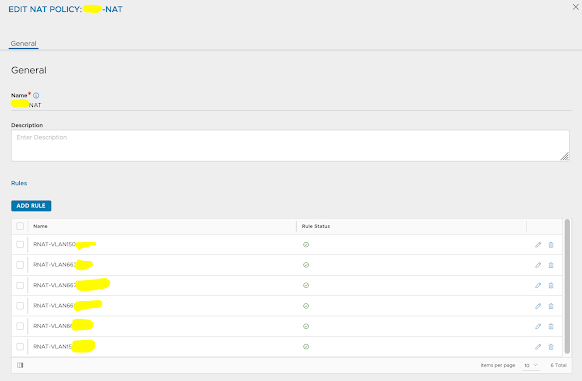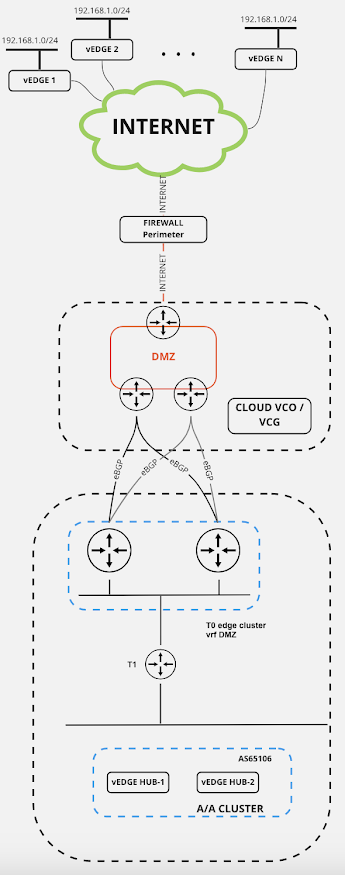NSX ALB routing - multiple floating IP and BGP setup
Recently, I had very interesting scenario around NSX ALB (ex Avi Networks) setup with multiple networks, NAT's and no-NAT's, but more important routing requirement inside Customer environment.
As you are aware of - NSX ALB Service engines have multiple NICs - to be more accurate there are 1 management + 9 data interfaces, which can be used with different configurations depending on actual needs and infrastructure.
In my specific case, there were following assumptions which were successfully deployed across virtual service configuration:
- external network (from NSX ALB perspective) - based on Cisco ACI SDN solution, where basically different L3-outs (specific ACI setup) for multiple NSX ALB needs were configured directly on Cisco platform. For this purpose, we will introduce VRF named XYZ, specifically created for connections mentioned above;
- there is a need for multiple floating IP + BGP config in place on NSX ALB SE's, which can be found on this link Default Gateway (IP Routing on Avi SE);
- network service is introduced for per VRF routing purpose (in my case VRF XYZ), with config described on this link Network Service Configuration. Per below image (picture 2) multiple floating IP's are introduced, depending on server group which is needed;
- NAT is playing critical component also, because different policies are needed depending on traffic of interest - even some traffic does not need to be NAT-ed at all because of proper routing. This config on newer NSX ALB versions is available from GUI, but CLI can be used also if preferred (link NAT Configuration on Avi Service Engine). Picture 1 is from my example:



Comments
Post a Comment